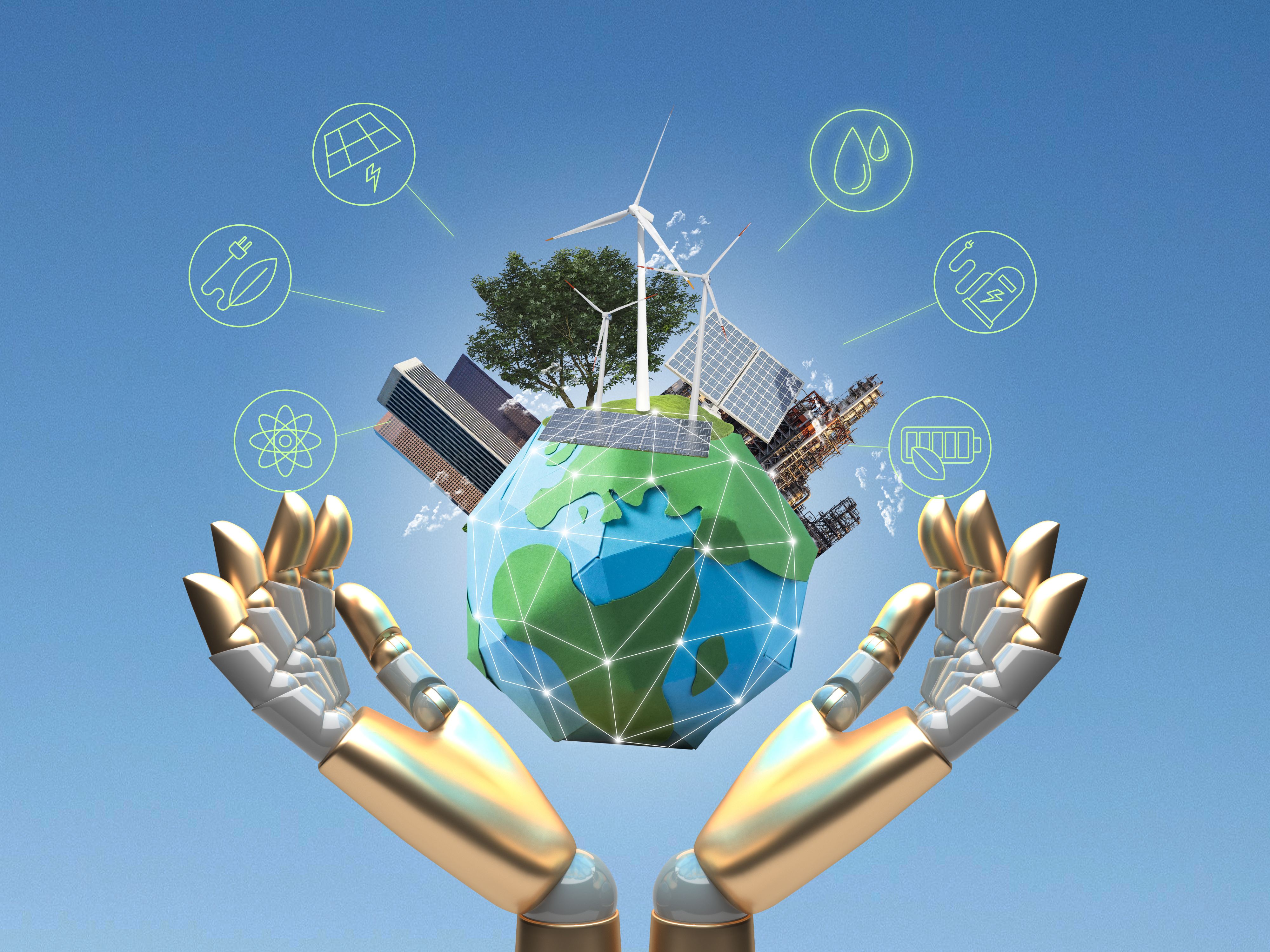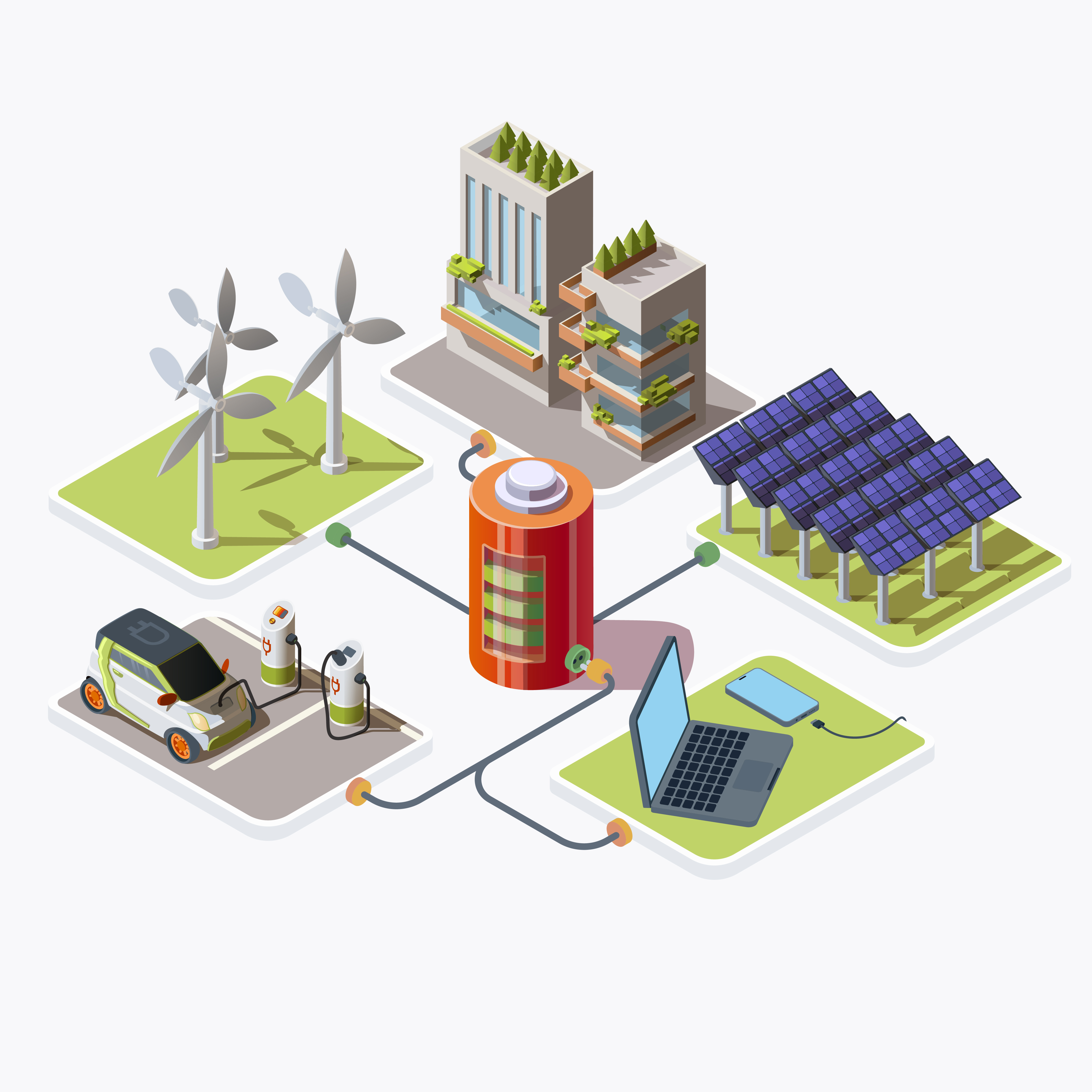Table of Contents
ToggleIntroduction
In recent years, the intersection of artificial intelligence (AI) and renewable energy has garnered increasing attention as a promising avenue for enhancing energy efficiency and sustainability. AI, with its ability to analyze vast amounts of data and optimize complex systems, holds the potential to revolutionize the renewable energy sector. This article explores the impact of AI on renewable energy efficiency, examining its applications, challenges, opportunities, and future outlook. Artificial intelligence refers to the simulation of human intelligence processes by machines, particularly computer systems. It encompasses various techniques such as machine learning, neural networks, and natural language processing. Renewable energy, on the other hand, comprises energy sources that are naturally replenished, such as solar, wind, hydro, and geothermal power. The adoption of AI in renewable energy is steadily growing, driven by advancements in AI algorithms, increased computing power, and the growing need for sustainable energy solutions. AI technologies are being applied across the renewable energy value chain, from energy generation to distribution and storage.
AI Applications in Renewable Energy
One of the key applications of AI in renewable energy is in weather forecasting. AI algorithms analyze vast amounts of meteorological data to provide accurate predictions of weather patterns, including solar irradiance, wind speed, and cloud cover. By leveraging AI-driven weather forecasts, renewable energy operators can optimize the scheduling and operation of solar, wind, and hydroelectric power plants, maximizing energy output and reducing reliance on backup power sources.
AI-powered predictive maintenance is another critical application in renewable energy. By analyzing sensor data from wind turbines, solar panels, and other renewable energy assets, AI algorithms can detect anomalies and predict potential equipment failures before they occur. This proactive approach to maintenance minimizes downtime, reduces maintenance costs, and prolongs the lifespan of renewable energy infrastructure.
Optimization of Energy Generation and Distribution
Solar energy generation can be significantly optimized through AI-driven solutions for solar panel orientation and tracking. AI algorithms analyze factors such as the sun’s position, shading effects, and weather conditions to dynamically adjust the orientation and tilt of solar panels for maximum energy capture throughout the day. Additionally, AI-powered tracking systems can follow the sun’s trajectory, further enhancing energy yield and efficiency.
AI is also transforming energy distribution through the development of smart grid technologies. These systems leverage AI algorithms to analyze real-time data from sensors, meters, and other grid components to optimize energy distribution, manage demand response programs, and detect and mitigate power outages. By enabling more efficient and reliable electricity delivery, smart grid technologies contribute to overall energy efficiency and grid stability.
Enhancing Energy Storage Solutions
Energy storage is essential for balancing supply and demand in renewable energy systems, particularly in intermittent energy sources such as solar and wind. AI algorithms are being used to optimize battery storage systems, determining the most efficient charging and discharging strategies based on electricity prices, demand patterns, and renewable energy generation forecasts. By optimizing energy storage operations, AI enhances grid stability, reduces reliance on fossil fuel backup generation, and supports the integration of higher levels of renewable energy.
At the grid scale, AI is playing a crucial role in managing large-scale energy storage systems. These systems, such as pumped hydroelectric storage, compressed air energy storage, and grid-scale battery arrays, require sophisticated control algorithms to optimize energy flow, maintain grid stability, and respond to dynamic energy market conditions. AI-based management systems analyze diverse data sources and employ predictive algorithms to optimize energy storage operations, maximize revenue streams, and support the transition to a more flexible and resilient grid.
Challenges and Opportunities
One of the primary challenges in AI applications for renewable energy is the availability of high-quality data. Reliable and comprehensive datasets are essential for training AI models and ensuring accurate predictions and optimizations. However, collecting and accessing such data can be challenging, particularly in remote or underdeveloped regions where renewable energy infrastructure is expanding rapidly. Additionally, data privacy concerns and regulatory restrictions may limit the sharing of data among stakeholders, further complicating AI deployment in the renewable energy sector.
Despite these challenges, there are opportunities for improving data quality and availability in the renewable energy sector. Collaborative efforts among industry stakeholders, research institutions, and government agencies can facilitate data sharing and standardization, leading to more comprehensive and reliable datasets for AI applications. Moreover, advancements in sensor technology, IoT devices, and satellite imagery are expanding the scope of data collection, enabling more accurate predictions and optimizations in renewable energy systems.
Scalability and Deployment
Scaling AI solutions for renewable energy across diverse geographical locations presents another significant challenge. The optimal AI algorithms and models may vary depending on factors such as climate conditions, resource availability, and grid infrastructure. Deploying AI-driven solutions in remote or underserved regions with limited connectivity and technical expertise can be particularly challenging. Moreover, ensuring the scalability and interoperability of AI systems across different renewable energy technologies and market environments requires careful planning and coordination among stakeholders.
Deploying AI-driven technologies in existing energy infrastructure also poses challenges. Integration with legacy systems, interoperability with existing control systems, and ensuring cybersecurity are among the key considerations. Moreover, regulatory barriers, such as permitting and approval processes, may hinder the rapid deployment of AI solutions in the renewable energy sector. Addressing these challenges requires collaboration among industry stakeholders, policymakers, and technology providers to develop robust deployment strategies and regulatory frameworks that support the adoption of AI in renewable energy.
Regulatory and Ethical Considerations
Regulatory frameworks play a crucial role in shaping the adoption of AI in the renewable energy sector. Policymakers must establish clear guidelines and standards for the development, deployment, and operation of AI-driven technologies to ensure safety, reliability, and compliance with environmental regulations. Additionally, regulations governing data privacy, intellectual property rights, and liability issues need to be addressed to foster trust and confidence in AI applications for renewable energy.
Ethical considerations also arise in the deployment of AI in renewable energy systems. Questions of fairness, accountability, and transparency in AI decision-making processes must be addressed to mitigate potential biases and ensure equitable outcomes. Moreover, the socio-economic impacts of AI adoption, such as job displacement and community engagement, require careful consideration and proactive measures to mitigate adverse effects and maximize the benefits of AI for all stakeholders.
Conclusion
In conclusion, the intersection of artificial intelligence and renewable energy represents a paradigm shift in the way we generate, distribute, and consume energy. AI-driven solutions are unlocking new opportunities for improving energy efficiency, reducing costs, and mitigating climate change. However, realizing the full potential of AI in renewable energy requires addressing challenges related to data quality, scalability, and regulatory frameworks. By overcoming these challenges and capitalizing on emerging opportunities, we can harness the power of AI to accelerate the transition to a sustainable and resilient energy future.
FAQs
How does artificial intelligence contribute to renewable energy efficiency?
Artificial intelligence optimizes renewable energy systems by analyzing data, predicting energy generation patterns, and adjusting operations in real-time. This results in improved efficiency, increased output, and reduced operational costs for renewable energy sources such as wind and solar.
What are some specific applications of AI in renewable energy?
AI is used for various purposes in renewable energy, including predictive maintenance of wind turbines, optimization of solar panel angles for maximum energy generation, demand forecasting in smart grids, and grid stability management through real-time data analysis.
What economic benefits can be expected from integrating AI into renewable energy systems?
By enhancing energy production efficiency and reducing operational costs, AI technologies contribute to cost savings throughout the renewable energy value chain. Additionally, the growing market for AI-enabled renewable energy solutions presents lucrative investment opportunities for businesses and entrepreneurs.
What environmental impacts does AI have on renewable energy adoption?
AI helps minimize environmental impacts by maximizing energy output from renewable sources and reducing wastage. By optimizing energy production and distribution, AI technologies contribute to the reduction of carbon emissions and the conservation of natural resources.
What are the societal implications of AI integration in renewable energy?
The integration of AI in renewable energy creates new job opportunities in fields such as data analytics, software development, and system maintenance. However, it also raises concerns about job displacement and the need for workforce reskilling and upskilling to adapt to the changing technological landscape.







